5 Common Procurement Strategy Mistakes to Avoid


A well-planned procurement strategy doesn’t just ensure alignment of procurement activities with organizational goals, but it also brings your company a competitive advantage.
When done strategically, procurement becomes more efficient, and less risky, and opens the door to innovation and collaboration with suppliers.
But many procurement professionals don’t know how to create a well-defined strategy, so they make some common mistakes.
If you want to avoid these mistakes, define a bulletproof procurement strategy, and plan your activities accordingly, keep reading.
You’ll learn about the most common procurement strategy mistakes so you can avoid them.
Is your procurement strategy based on clear objectives?
If you’re finding it difficult to highlight precise objectives, that spells trouble.
A path to strategic procurement starts with establishing procurement goals that satisfy current and future company needs.
So if these goals aren’t clearly defined, you risk straying from your course or spinning in circles, which makes your procurement anything but strategic. Doing so will unlikely help you achieve specific business aims.
For all its complexities, procurement rests on several objectives illustrated below that form the basis of good procurement strategies, and they are your starting point.
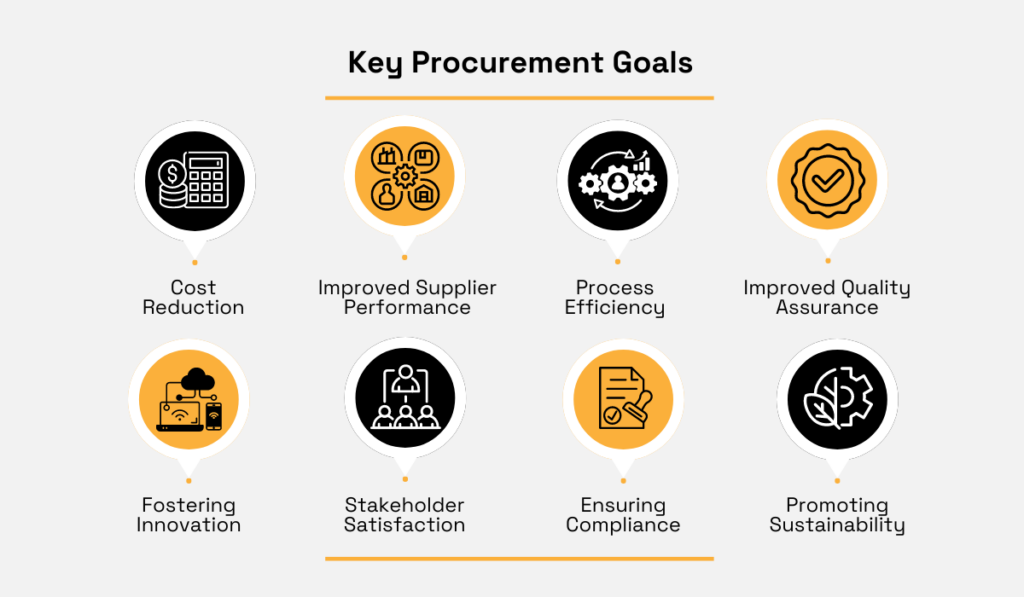
Source: Veridion
Cost reduction and improved efficiency remain top priorities, while sustainability initiatives or more innovation may become integral at a certain point in time.
This brings us to another important point.
Clear objectives are vital for procurement strategies, but they also need to align with wider company goals.
Procurement activities frequently answer pressing needs, which don’t always correspond to the organization’s long-term vision.
By prioritizing alignment, you’re making sure your procurement efforts are never too removed from the big picture and the results you want to see.
For example, if your company is moving toward product expansion, the procurement strategy might have to prioritize establishing a strong supplier network in the new market to support this process.
Several systems help businesses set clear objectives, and one of them is the SMART Goals framework.
The idea behind the SMART framework is to define Specific, Measurable, Attainable, Relevant, and Time-based goals, ensuring efficient use of the company’s time and resources.
After all, breaking down large needs and wants into specific goals helps you determine whether they’re a strategic priority.
Here’s what the breakdown of one procurement objective would look like, courtesy of Success In Depth.
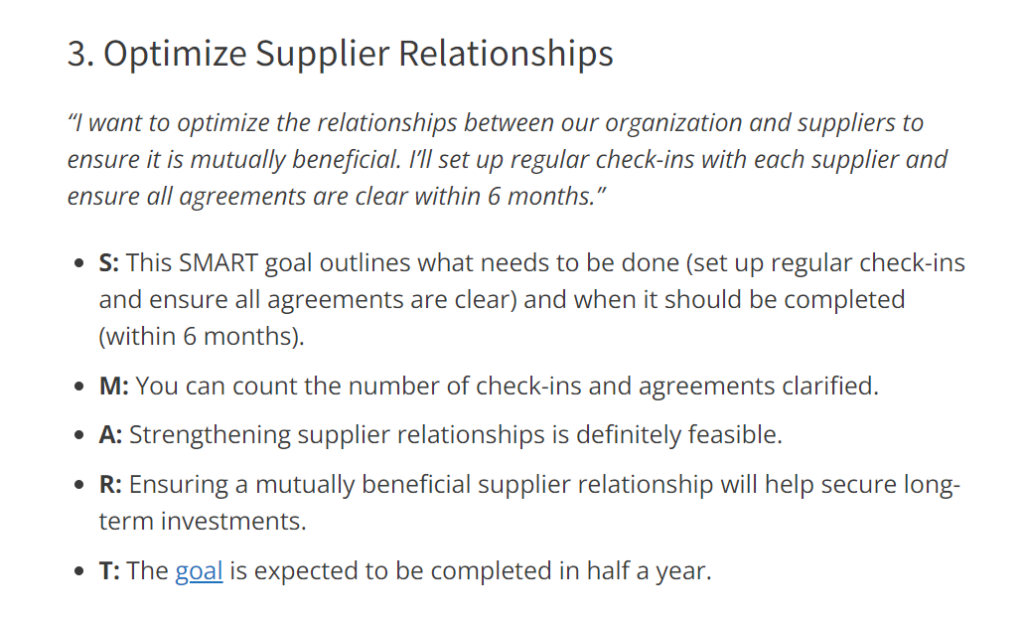
Source: Success In Depth
Besides giving the reasoning behind wanting to optimize supplier relationships, the framework provides a clear time marker and a method of measuring progress.
A structured approach based on this or a similar framework translates to clear goals that are aligned with your business aims, bringing you closer to a good procurement strategy.
It’s hard to devise a good procurement strategy when relying on manual processes that waste so many resources while being prone to human error.
If you’re not familiar with procurement automation, you’re likely burdened with various manual administrative processes, and perhaps matching invoices to POs is a part of your daily routine.
Manual processes like these hinder productivity and limit strategic decision-making, resulting in a waste of time and money.
Say your procurement strategy aims for cost reduction as a main objective but relies on inefficient manual processes at the same time.
These internal inefficiencies will directly counteract your cost-saving objectives, making it challenging to achieve them.
The good news is that today we have a lot of tools for automating various procurement processes, including:
Now, whether the problem is resistance to change or the lack of in-depth resources on procurement automation, the fact is that many businesses are not leveraging automation.
Sarah Scudder, one of the leading voices in the procurement and supply chain industry, explains why pioneering businesses rely on automation.
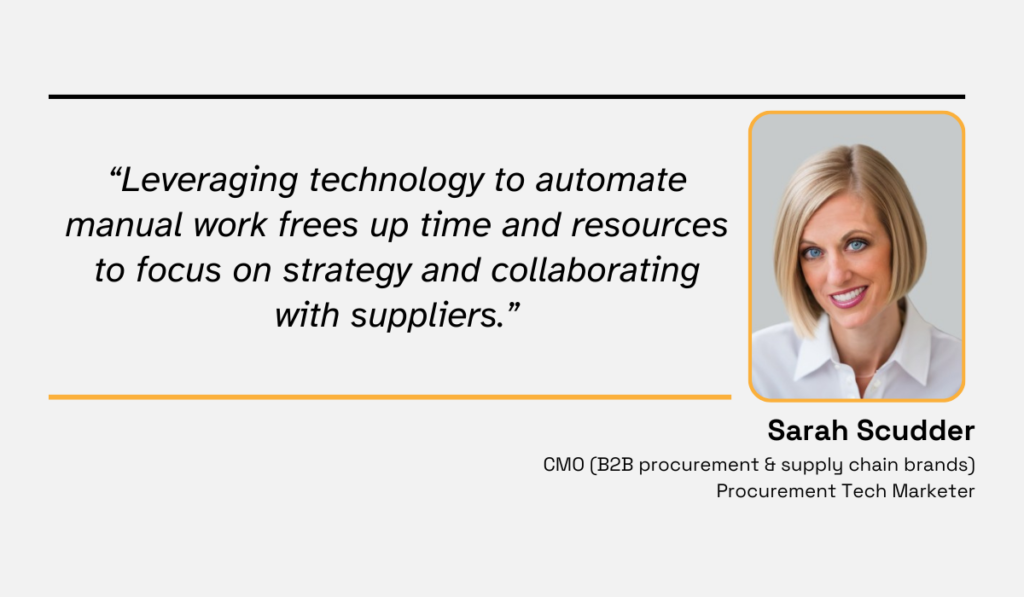
Illustration: Veridion / Quote: ProcureScape
Procurement automation facilitates efficiency and data accuracy, allowing you to put more focus on value-added tasks, like improving relationships with your suppliers or developing your procurement strategy.
In fact, the advances in AI and data analytics technology signal an industry-wide shift, transforming procurement strategies and entire processes.
To illustrate this impact, we’ll walk you through how Veridion, our proprietary tool, improves and automates supplier sourcing.
Veridion is an AI-powered procurement automation tool that accelerates supplier discovery, enabling procurement specialists to easily navigate our vast network of over 70 million suppliers worldwide.
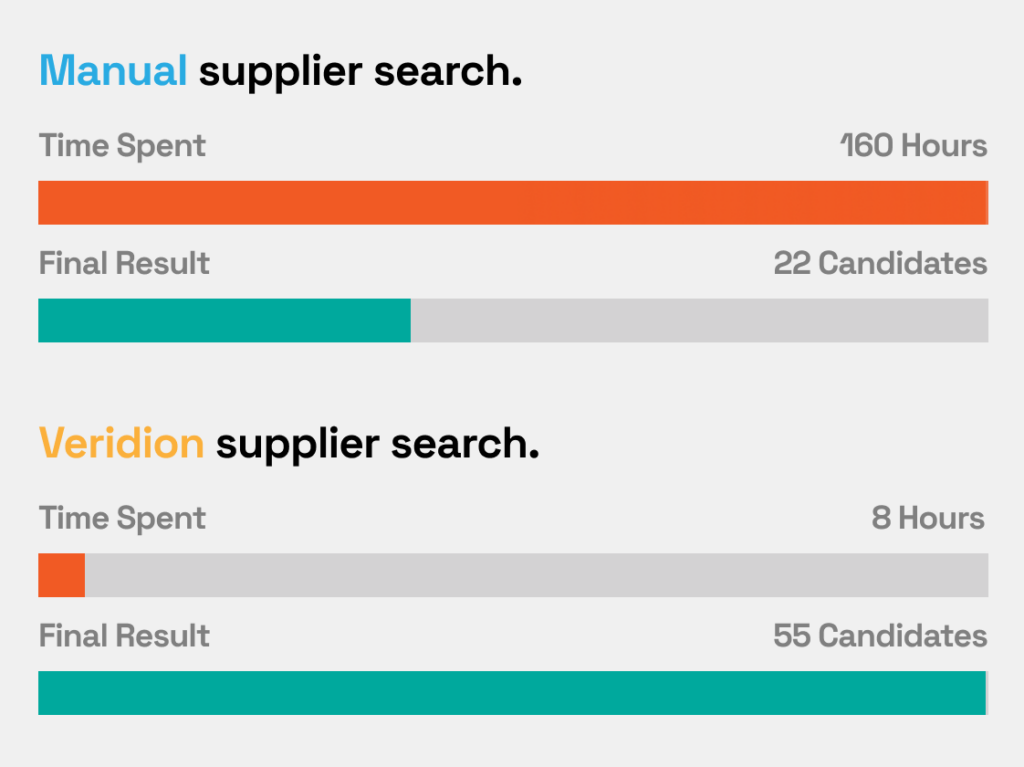
Source: Veridion
Flexible search capabilities allow you to filter companies right down to specific product details, and quickly identify ideal supplier profiles.
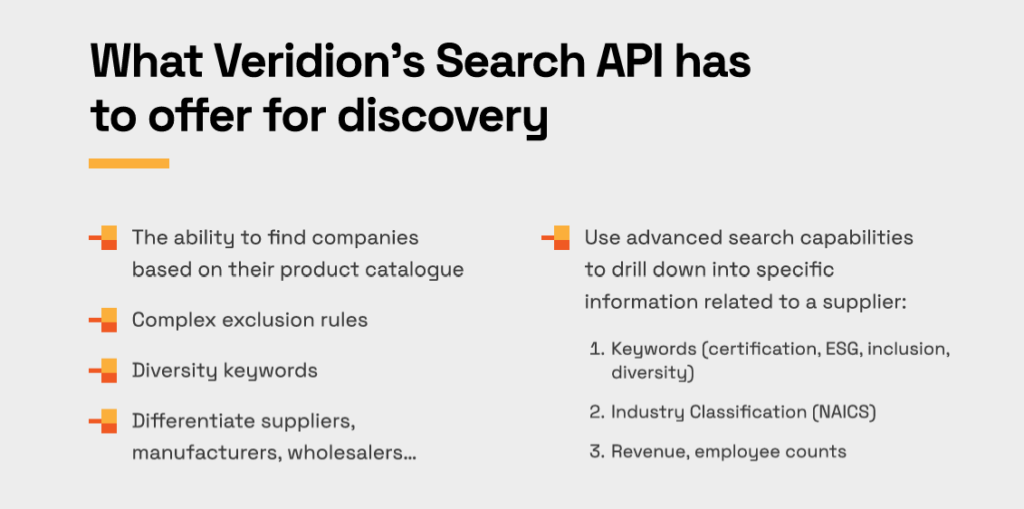
Source: Veridion
The kicker? Veridion’s data is updated weekly, putting it in a league of its own when it comes to both global coverage and accuracy.
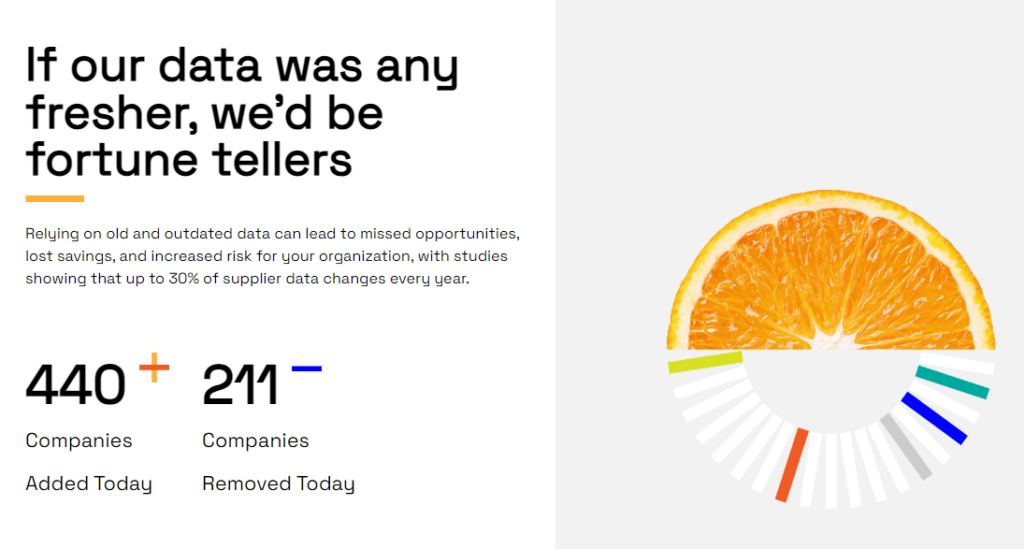
Source: Veridion
To recap, automation delivers a host of benefits, ensuring maximum agility and productivity, with which companies that cling to manual processes simply can’t keep up.
Not embracing it is a mistake that will prevent you from devising a good procurement strategy.
Creating a procurement strategy should include breaking silos of information and including insights from other departments.
In many companies, there’s poor communication between procurement and other departments, despite procurement’s role in bridging internal and external operations.
Several things can contribute to this lack of communication, including:
This lack of open dialogue between procurement, finance, operations, and other relevant teams means it’s less likely that your company can identify areas for improvement or effectively address potential risks.
Failure to collaborate has varied consequences, from missed growth opportunities to more serious financial mismanagement, some of them shown below.
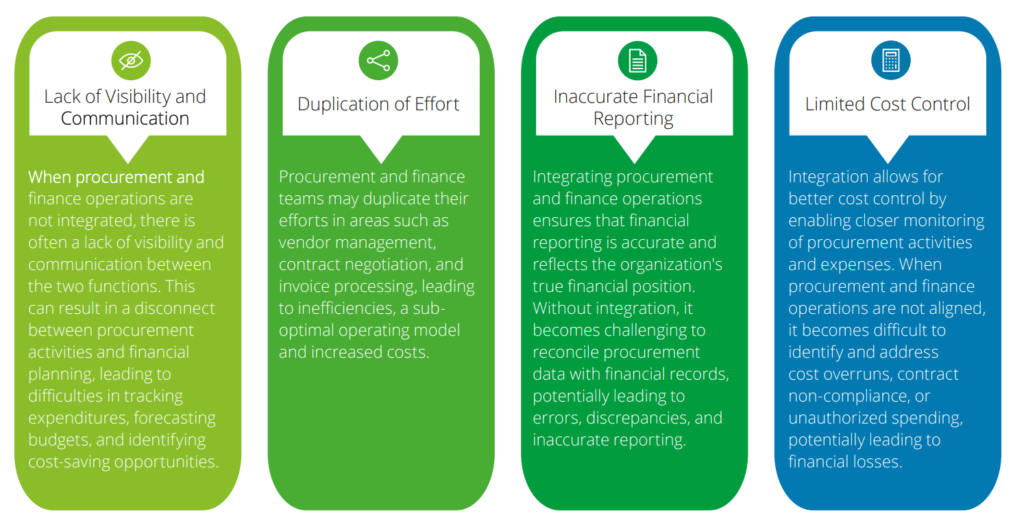
Source: Deloitte Report
Staying up to speed with the ever-changing priorities of stakeholders requires procurement teams to take an active role in facilitating cross-functional collaboration.
Effective collaboration means making full use of different teams’ expertise, but also being on the same page regarding goals, priorities, and KPIs.
This is particularly true for procurement and finance who collaborate on budgets and forecasts but also coordinate financial reporting.
According to Deloitte’s report, closely integrated procurement and finance operations are particularly important for achieving substantial benefits.
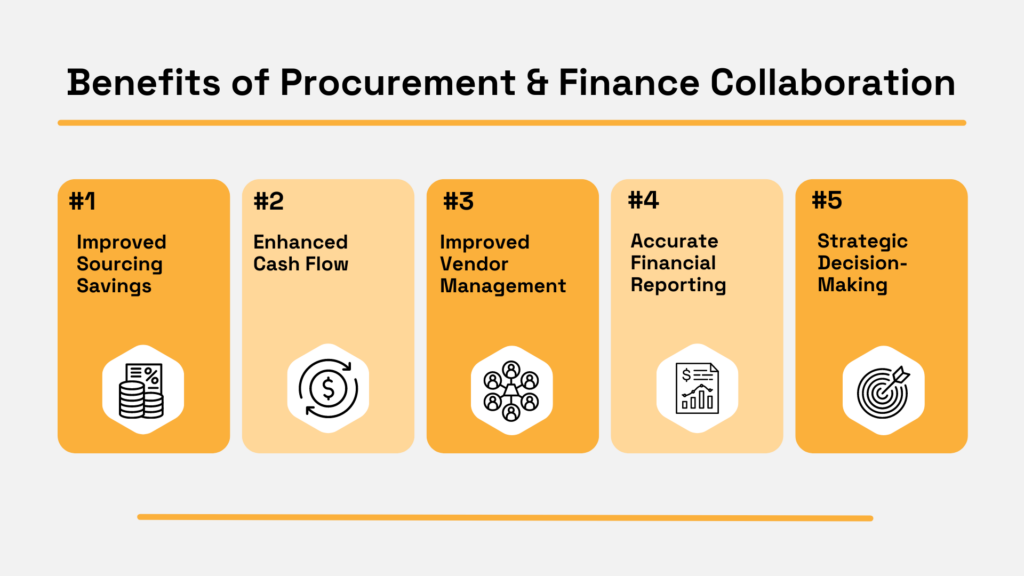
Illustration: Veridion / Source: Deloitte
These improvements lead to up to 30% higher operational efficiency, and a 20-40% uplift in realized savings, as well as a better end-user experience.
So, what’s the first step towards making these benefits a reality?
For starters, having clear channels of communication makes it easier for the procurement team to understand other departments’ strategic priorities and perspectives.
Keeping open lines of communication is also necessary for fostering a culture of collaboration that ensures each team works in alignment with the long-term company vision.
Maxwell Lubeka, Procurement Manager at Evidence Action, points out the importance of procurement’s strategic function:
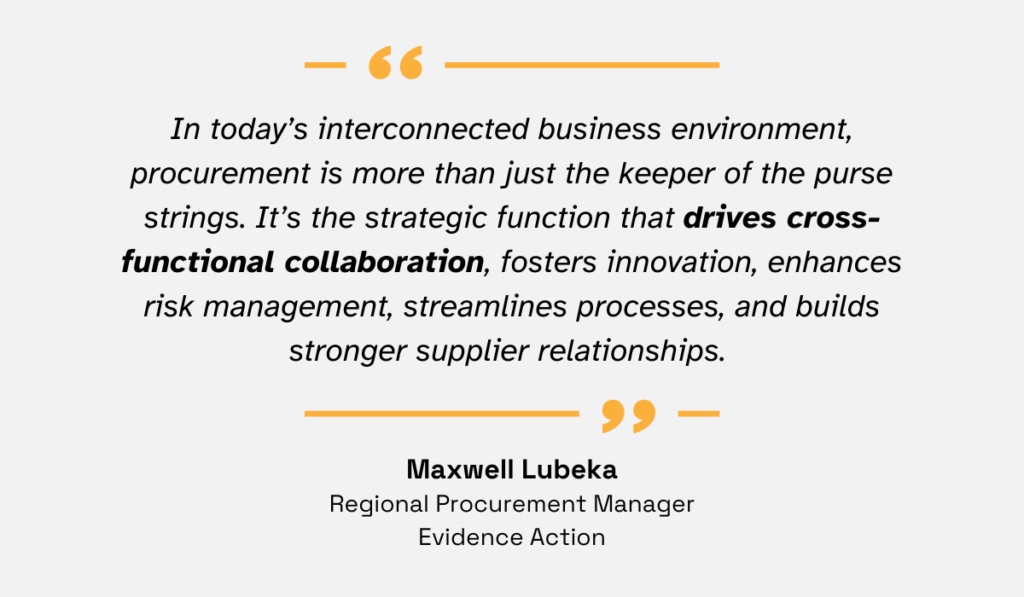
Illustration: Veridion / Quote: LinkedIn
One thing is certain: siloed approaches are no longer an option for procurement operations, which means it’s time to embrace cross-functional collaboration when planning any strategic moves.
Supplier diversification has emerged as the key strategy for dealing with various supply chain disruptions, helping companies build resilience and establish contingency plans.
The 2020 global pandemic and the 2022 war in Ukraine underlined the vulnerability of the modern, globalized supply chain, causing businesses to reevaluate their supply chain strategy and management.
However, not everyone is successfully adapting to the rapidly changing reality.
Many companies ignore supplier diversification, preferring to rely on a single supplier for one or more parts or services.
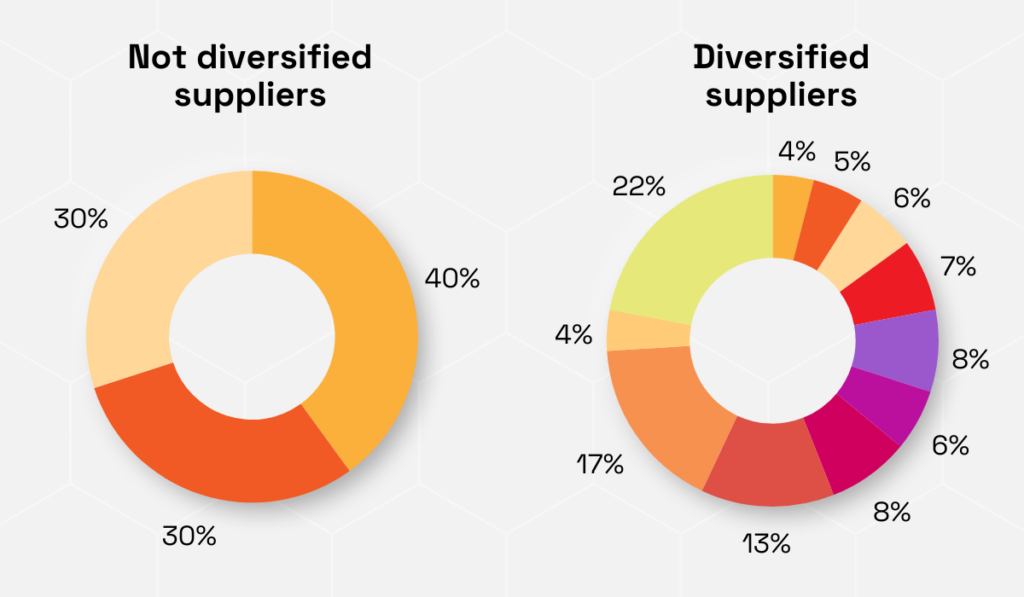
Source: Veridion
This isn’t surprising, given the simplicity and the initial costs of single compared to multiple suppliers.
Supplier syndication can be a good thing, but it’s a different story when it comes to mitigating the risks of disruptions.
Faced with unpredictable demand, low supply, and geopolitical events, businesses have been making big changes to their procurement strategies and supplier bases.
This shift is captured in the Ernst and Young (EY) Industrial Supply Chain Survey, which shows that 62% of respondents made significant changes to their supplier base from 2020 to 2022.
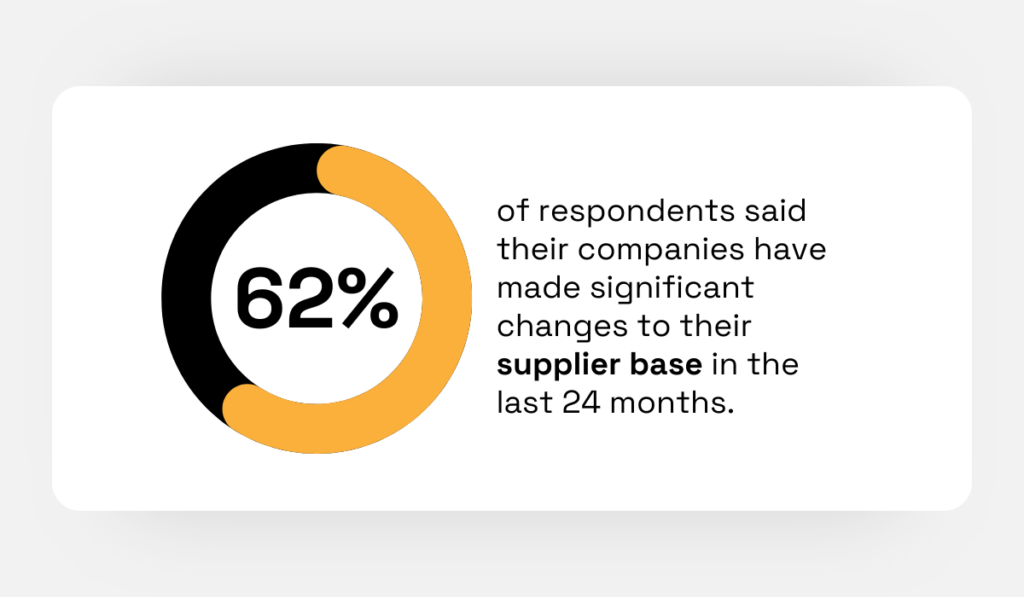
Illustration: Veridion / Data: Ernst & Young Global Limited
It’s particularly telling that 55% of surveyed businesses stated they were planning to implement significant changes in the next 24 months too.
The goal of supply chain diversification is to stay resilient in the face of global supply chain interdependency and any external shocks that may affect it.
By having multiple suppliers, you can ensure you have alternatives if a single partner is forced to slow down production or cut off the supply flow.
Having an option to quickly find alternative suppliers with tools like Veridion is super useful in these situations.
You can also choose suppliers who are closer to your home market, in other words, use near-shoring practices.
Alternatively, you can use multi-shoring as a backup strategy by spreading your suppliers out geographically. This ensures you can rely on at least one of them if obstacles arise in a particular area.
However, it’s all about finding what’s right for your business and striking the right balance.
Diversification calls for an investment in time and resources, meaning it’s best to expand your supplier base in stages while closely monitoring the return on investment.
Nurturing strong supplier relationships is the cornerstone for stable procurement strategies.
But many businesses minimize their relationship-building efforts after the initial engagement.
Let’s examine a common scenario.
Your procurement team has spent 2-3 months scouring the web for the best possible supplier profiles (because they are not using Veridion!), investing even more time and effort to negotiate the most favorable terms.
But fast forward a year or a couple of months, and the supplier notifies you that they wish to terminate the contract.
That wouldn’t happen out of the blue if you had a close relationship with that supplier.
Supplier relationships can greatly influence the quality of your business, and maintaining them is one of the most challenging aspects of strategic procurement.
Relationship management is where the heavy lifting really begins.
Exchanges with suppliers may seem fleeting and transactional, but they shouldn’t be. This is the root of this common mistake.
Meanwhile, successful businesses prioritize long-term supplier relationships to secure competitive advantage.
Andrea Greenwald, senior director analyst, says that strong supplier relationships require playing the long game, and are based on the consistency of open, strategic exchanges.
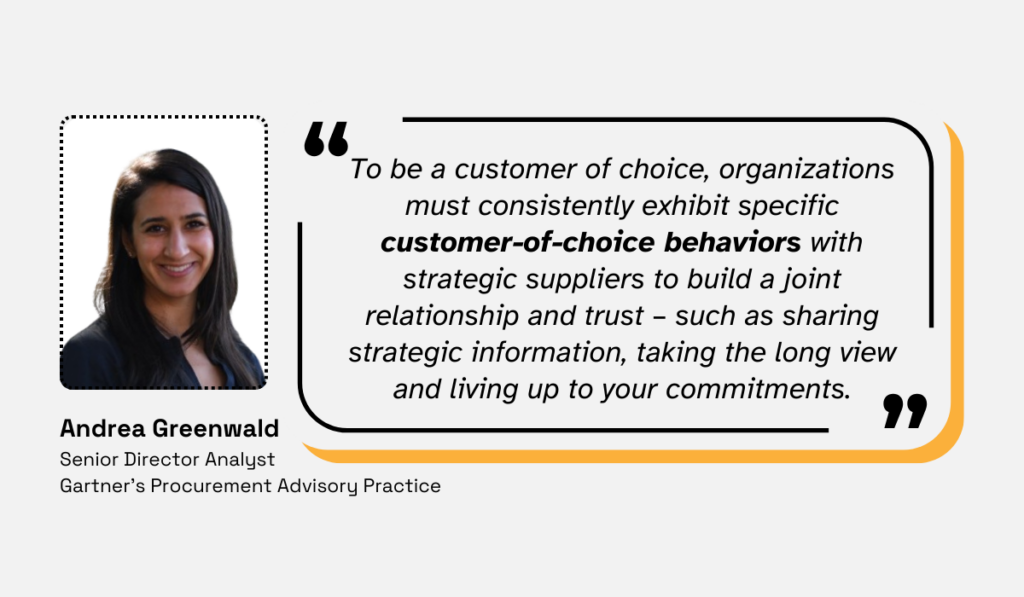
Illustration: Veridion / Quote: Procurement Magazine
Investing in strong supplier relationships allows you to position yourself as the preferred customer. Such customers don’t get sacked without notice.
Other benefits of stronger relationships with suppliers include improved supplier performance, notable cost savings, and enhanced risk management.
So, how do you nurture these relationships?
Using software for managing supplier relationships plays a large role in these efforts, but even without any tools, here are a couple of points you should keep in mind.
| Regular and Open Communication | Open communication channels and regular meetings ensure timely updates and help you better understand each side’s needs and limitations. |
| Joint Problem-Solving | Working together to find solutions, instead of placing blame, strengthens supplier relationships. It can also lead to new, innovative approaches. |
| Aligning Goals | Understanding each other’s goals and seeking alignment comes from sharing long-term business plans or market insights. |
| Recognition and Feedback | Showing appreciation for the supplier’s efforts and work affirms the sense of partnership. It also increases the effectiveness of constructive feedback. |
| Fair and Ethical Treatment | Equal and fair treatment includes prompt payments, reasonable contract terms, and respect for supplier’s business constraints and challenges. |
| Collaborative Growth Opportunities | Recognizing and pursuing growth opportunities together helps reinforce the sense of partnership, whether these involve joint research and development, or co-investment. |
Ultimately, it’s all about embracing and reinforcing the partnership mindset. This will unlock new levels for you, and make your strategic goals more achievable than ever.
A successful procurement strategy is built on solid foundations.
By avoiding these common mistakes, you’ll create these foundations and set yourself on the right path.
Take the time to address these pitfalls and refine your approach, then confidently put your plan into action.
Remember, a well-thought-out strategy paves the way for greater efficiency and success.
So good luck, and here’s to your achievements ahead!